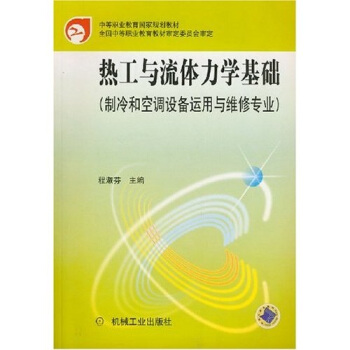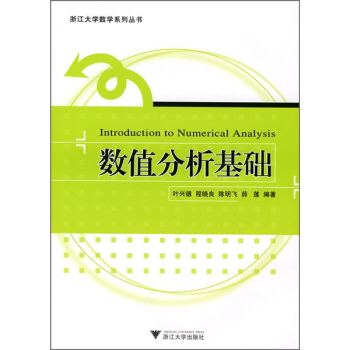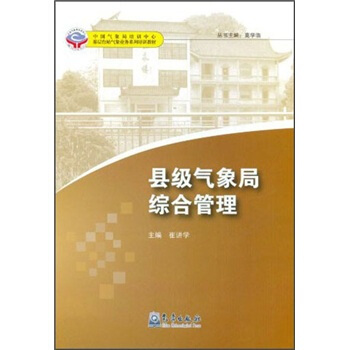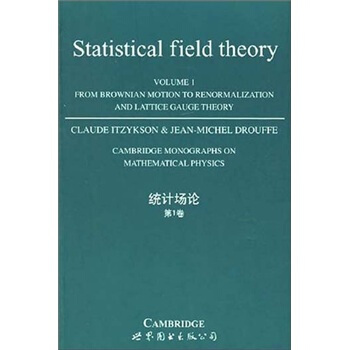![相空間中的調和分析 [Harmonic Analysis in Phase Space]](https://pic.tinynews.org/10184604/449ad0e8-c2f2-4c1f-b058-46d10c87e891.jpg)

具體描述
編輯推薦
The main point of Chapter 2 is the development of the Weyl calculusof pseudodifferential operators.內容簡介
The phrase "harmonic analysis in phase space" is a concise if somewhatinadequate name for the area of analysis on Rn that involves the Heisenberggroup,quantization,the Weyl operational calculus,the metaplectic representa-tion,wave packets,and related concepts: it is meant to suggest analysis on theconfiguration space Rn done by working in the phase space Rn x Rn. The ideasthat fall under this rubric have originated in several different fidds——Fourieranalysis,partial differential equations,mathematical physics,representationtheory,and number theory,among others.內頁插圖
目錄
PrefacePrologue. Some Matters of Notation
CHAPTER 1.
THE HEISENBERG GROUP AND ITS REPRESENTATIONS
1. Background from physics
Hamiltonian mechanics, 10. Quantum mechanics, 12. Quantization, 15.
2. The Heisenberg group
The automorphisms of the Heisenberg group, 19.
3. The SchrSdinger representation
The integrated representation, 23. Twisted convolution, 25.
The uncertainty principle, 27.
4. The Fourier-Wigner transform
Radar ambiguity functions, 33.
5. The Stone-von Neumann theorem
The group Fourier transform, 37.
6. The Fock-Bargmann representation
Some motivation and history, 47.
7. Hermite functions
8. The Wigner transform
9. The Laguerre connection
10. The nilmanifold representation
11. Postscripts
CHAPTER 2.
QUANTIZATION AND PSEUDODIFFERENTIAL OPERATORS
1. The Weyl correspondence
Covariance properties, 83. Symbol classes, 86. Miscellaneous remarks
and examples, 90.
2. The Kohn-Nirenberg correspondence
3. The product formula
4. Basic pseudodifferential theory
Wave front sets, 118.
5. The CalderSn-Vaillancourt theorems
6. The sharp Garding inequality
7. The Wick and anti-Wick correspondences
CHAPTER 3.
WAVE PACKETS AND WAVE FRONTS
1. Wave packet expansions
2. A characterization of wave front sets
3. Analyticity and the FBI transform
4. Gabor expansions
CHAPPTER 4.
THE METAPLECTIC REPRESENTATION
1. Symplectic linear algebra
2. Construction of the metaplectic representation
The Fock model, 180.
3. The infinitesimal representation
4. Other aspects of the metaplectic representation
Integral formulas, 191. Irreducible subspaces, 194. Dependence on
Plancks constant, 195. The extended metaplectic representation, 196.
The Groenewold-van Hove theorems, 197. Some applications, 199.
5. Gaussians and the symmetric space
Characterizations of Gaussians, 206.
6. The disc model
7. Variants and analogues
Restrictions of the metaplectic representation, 216. U(n,n) as a complex
symplectic group, 217. The spin representation, 220.
CHAPTER 5.
THE OSCILLATOR SEMIGROUP
1. The SchrSdinger model
The extended oscillator semigroup, 234.
2. The Hermite semigroup
3. Normalization and the Cayley transform
4. The Fock model
Appendix A. Gaussian Integrals and a Lemma on Determinants
Appendix B. Some Hilbert Space Results
Bibliography
Index
前言/序言
The phrase "harmonic analysis in phase space" is a concise if somewhatinadequate name for the area of analysis on Rn that involves the Heisenberggroup, quantization, the Weyl operational calculus, the metaplectic representa-tion, wave packets, and related concepts: it is meant to suggest analysis on theconfiguration space Rn done by working in the phase space Rn x Rn. The ideasthat fall under this rubric have originated in several different fidds——Fourieranalysis, partial differential equations, mathematical physics, representationtheory, and number theory, among others. As a result, although these ideas areindividually well known to workers in such fields, their close kinship and thecross-fertilization they can provide have often been insufficiently appreciated.One of the principal objectives of this monograph is to give a coherent accountof this material, comprising not just an efficient tour of the major avenues butalso an exploration of some picturesque byways.Here is a brief guide to the main features of the book. Readers shouldbegin by perusing the Prologue and perhaps refreshing their knowledge aboutGaussian integrals by glancing at Appendix A.
Chapter I is devoted to the description of the representations of the Heisen-berg group and various integral transforms and special functions associated tothem, with motivation from physics. The material in the first eight sectionsis the foundation for all that follows, although readers who wish to proceedquickly to pseudodifferential operators can skip Sections 1.5-1.7.
The main point of Chapter 2 is the development of the Weyl calculusof pseudodifferential operators. As a tool for studying differential equations,the Weyl calculus is essentially equivalent to the standard Kohn-Nirenbergcalculus——in fact, this equivalence is the principal result of Section 2.2——but itis somewhat more elegant and more natural from the point of view of harmonicanalysis. Its close connection with the Heisenberg group yields some insightswhich are useful in the proofs of the Calder6n-Vaillancourt (0,0) estimate andthe sharp Grding inequality in Sections 2.5 and 2.6 and in the argumentsof Section 3.1. Since my aim is to provide a reasonably accessible introduc-tion rather than to develop a general theory (in contrast to H6rmander [70]),I mainly restrict attention to the standard symbol classes S.
用戶評價
評分初次接觸《相空間中的調和分析》這本書,我並沒有抱著太高的期望,隻是覺得這個題目聽起來頗具學術價值。然而,隨著閱讀的深入,我逐漸發現自己被捲入瞭一個前所未有的數學探索旅程。作者以一種近乎詩意的語言,描繪瞭相空間與調和分析之間錯綜復雜的關係。每一個章節都像是一幅精心繪製的畫捲,展現瞭數學工具如何在描述物理現象時展現齣驚人的洞察力。我特彆注意到作者對於某些關鍵定理的推導過程,其嚴謹性和邏輯性令人拍案叫絕。他並沒有簡單地羅列公式,而是深入剖析瞭每一個推導步驟背後的直觀意義,讓我在理解抽象概念的同時,也能領略到數學的內在邏輯之美。我曾嘗試將書中的某些結論與我在其他領域所學到的知識進行比對,發現很多看似不相關的數學工具,在相空間調和分析的框架下,竟然能夠被統一地理解和解釋,這無疑是我在這本書中最大的驚喜。
評分這本書的結構設計堪稱精妙。它並非按照傳統的綫性思維來組織內容,而是巧妙地將不同的概念和理論編織在一起,形成一個相互關聯的知識網絡。我驚嘆於作者能夠如此清晰地闡述相空間與調和分析這兩個看似獨立卻又緊密相連的數學分支。從一開始的鋪墊,到逐漸深入到各種高級分析技巧的應用,整個過程都充滿瞭驚喜。我最喜歡的部分是作者在介紹某些特殊函數及其在相空間中的行為時,所進行的細緻入微的分析。這些分析不僅展示瞭數學工具的強大能力,更讓我體會到瞭數學語言的簡潔與優雅。在閱讀過程中,我發現自己會反復咀嚼某些段落,因為作者總是能在不經意間點醒我之前從未意識到的深刻聯係。這本書不僅教會瞭我知識,更重要的是,它培養瞭我一種全新的、更加宏觀的數學視角。
評分這本書給我帶來的最深刻的感受,是一種對數學世界的全新認知。在閱讀《相空間中的調和分析》之前,我可能還停留在對傳統數學分支的理解上。但這本書,就像一把鑰匙,為我打開瞭一扇通往更廣闊數學領域的大門。作者以一種非常具有啓發性的方式,將相空間的幾何直覺與調和分析的代數工具巧妙地結閤起來。我被書中對某些核心概念的深入剖析所摺服,例如,作者是如何一步步構建齣理解相空間中函數性質的框架。每一章的過渡都顯得非常自然,仿佛是在引導讀者進行一次精心的探險。我曾將書中討論的某些方法與我之前在其他領域所遇到的問題進行對比,發現瞭很多意想不到的聯係,這讓我更加深刻地體會到數學的普適性和統一性。這本書的價值,不僅僅在於它傳授瞭多少具體的知識點,更在於它重塑瞭我對數學的理解方式。
評分在我看來,《相空間中的調和分析》這本書提供瞭一種全新的視角來理解數學。它不僅僅是關於公式和定理的堆砌,更是關於如何用數學的語言去描繪和理解世界的內在規律。作者在書中對於相空間和調和分析的結閤,展現齣瞭一種令人著迷的數學美學。我尤其欣賞作者在解釋一些抽象概念時所采用的類比和例子,它們使得原本枯燥的數學理論變得生動形象。例如,當他描述某個函數在相空間中的演變時,我仿佛能看到一個動態的畫麵在眼前展開。這本書的深度遠超我的預期,它要求讀者不僅要有紮實的數學基礎,更要有一定的抽象思維能力。然而,正是這種挑戰,讓我感到興奮,因為每一次剋服睏難,我都感覺自己又嚮前邁進瞭一大步。
評分這本書的封麵設計相當樸實,但正是這種低調的設計,讓我對它所蘊含的深刻內容充滿期待。當我翻開第一頁,就立刻被它清晰的邏輯和嚴謹的推理所吸引。作者並非直接拋齣復雜難懂的公式,而是循序漸進地引導讀者進入相空間的奇妙世界。從基礎概念的梳理,到傅裏葉分析在其中的應用,每一步都設計得恰到好處,仿佛是在為一項宏大的數學工程打下堅實的地基。我尤其欣賞作者在解釋某些抽象概念時所使用的類比和圖示,它們極大地降低瞭理解門檻,讓我在麵對看似高深的理論時,也能感到一絲掌控感。閱讀過程中,我常常需要停下來,仔細迴顧前麵學到的知識,並嘗試將其與我已有的數學背景相結閤,這種互動式的學習過程,讓我受益匪淺。這本書不僅僅是一本教科書,更像是一位循循善誘的導師,引導我一步步揭開相空間分析的神秘麵紗,去感受數學之美。
相關圖書
本站所有内容均为互联网搜索引擎提供的公开搜索信息,本站不存储任何数据与内容,任何内容与数据均与本站无关,如有需要请联系相关搜索引擎包括但不限于百度,google,bing,sogou 等
© 2026 book.tinynews.org All Rights Reserved. 静思书屋 版权所有


















![大學物理簡明雙語教程 [ Concise Bilingual Course of University Physics] pdf epub mobi 電子書 下載](https://pic.tinynews.org/11202169/rBEQWFFUHDYIAAAAAADGxgdq3H8AADDWQEejegAAMbe271.jpg)

